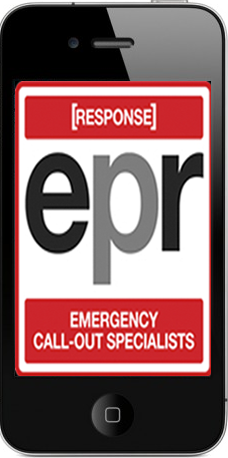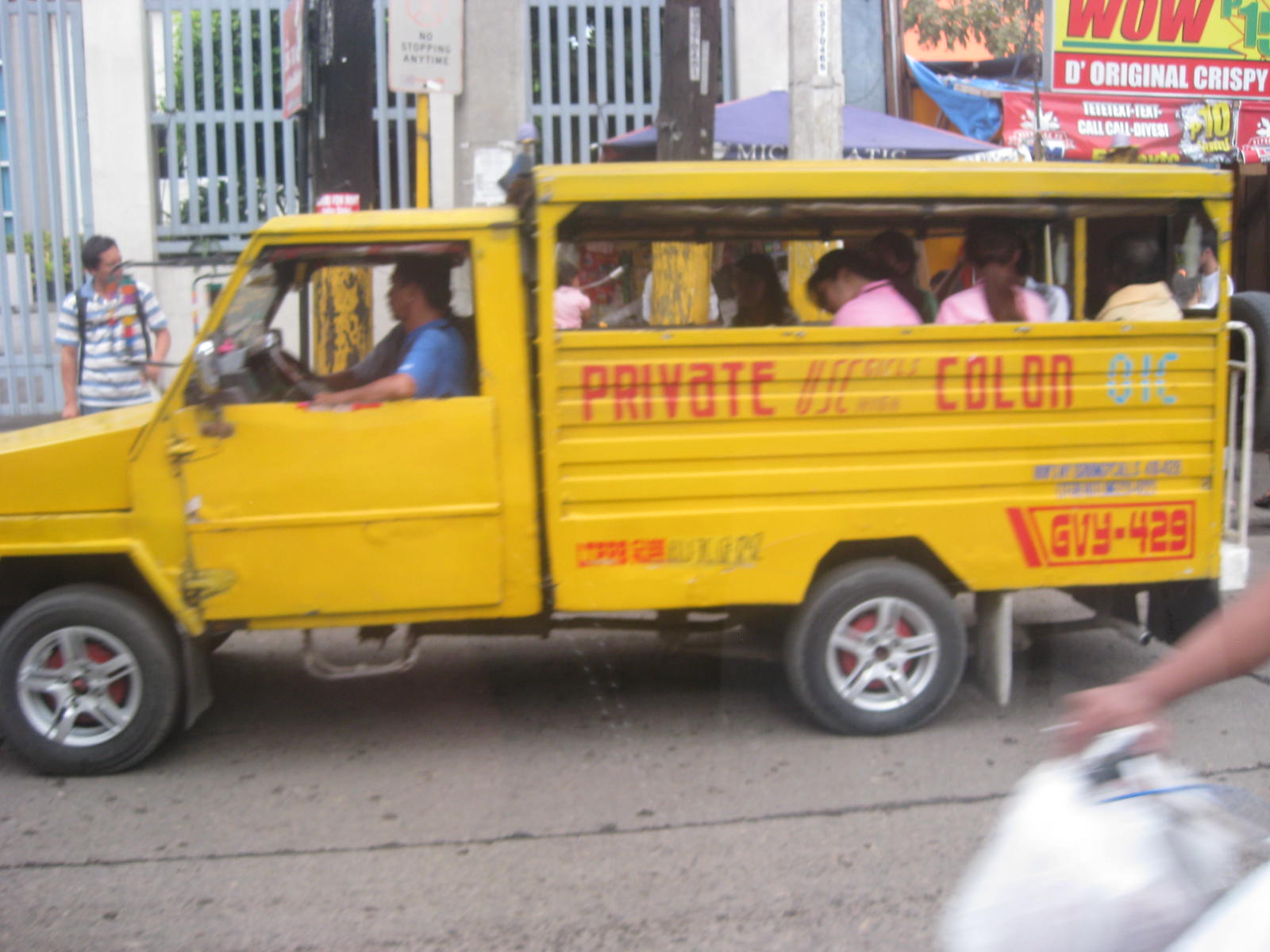
Innovation and team work between (Response) EPR Ltd, UK emergency electrical and plumbing specialists and AutoAlert, a vehicle tracking company has led to the development of a new iPhone app which enables Loss adjustors to input jobs in the field.
Check out a copy of the article from South London Business Press

Taxis might be taxis the world over but in the Philippines, they’re slightly different. Well, more than slightly, actually, they’re colourful, rather fun looking and called jeepneys. Maybe they’re the Philippine alternative to our people carriers; I wouldn’t mind hopping into one of these whenever I needed to get somewhere. Well, actually, as a London-based vehicle tracking company that specialises in GPS systems, AutoAlert has just won a major new contract with the World Bank on behalf of the Philippine government in Cebu to improve jeepney (taxi) scheduling. So, who knows, maybe I will get to ride around in one of these. Maybe I could bring the idea back home and get the local councils interested.
AutoAlert Ltd put forward a tender to the World Bank to develop a system to improve the taxi scheduling and monitoring in the Island of Cebu – and yes, we faced down some tough competition. To my delight, the award-winning technology we have developed convinced the powers that be, we won the contract and have been given the go ahead by the World Bank and Philippine government. It’s great news and the project is on schedule, all going well.
The project aim is to prove a proof-of-concept for the use of emerging ICT applications such as crowd-sourcing, open-mapping, alternative uses for mobile phones. AutoAlert is required to work on the mobile phone side of operations, collecting location data from jeepney drivers.
This can be used to collect traffic and transit data, plan and manage local transport services for taxi and public transit companies. It can also provide a platform for public participation in the transport system and network development. So far, so good.
The Philippines has 89 million people and is the fastest urbanizing country in East Asia which, as you can imagine, has significant implications for transport planning and management,economic, safety and environmental factors. If you think our potholes in the UK are anything to grumble about well, the quality of the roads out there is worse. This has resulted in higher transport costs, accident rates and fuel inefficiency. So hopefully we can improve things for them because the information technology tools needed to ensure accurate, consistently updated data for road asset and transport system management are simply not there at present.
This lack of objective data means city planners cannot implement efficient data-driven policy and investment planning. It’ll certainly be interesting to see the positive outcome of this project.
Jeepneys, you see, aren’t exactly the equivalent of our taxis. They offer an essential service as the backbone of the public transport network, often comprising more than 50% of the traffic flow. Their behaviour therefore significantly impacts the capacity and safety of roads. So you can see it’s quite an important project and one we’re really proud to be involved with.
Happy to hear your comments.
![]()
As a fleet manager the type of vehicle tracking you will need for your vehicles is largely determined by the size of your fleet. As one might expect, a company with a fairly large fleet where protection of the vehicles is a top priority is probably going to use equipment that is more elaborate and a higher cost. Smaller fleets generally use less expensive and not so complex systems that provide fewer functions. The great news is that new developments in technology are rapidly bringing less expensive products with some excellent qualities. It’s easy to make an expensive mistake so having worked in this industry for years I thought I would pass on a few helpful ideas.
Real time tracking ensures that fleet managers have all information on hand, as and when they need it such as location, speed and engine/braking information. This can be sent and received in ‘real time’ giving a constant, up to the minute record of data.
With a large fleet, economies of scale kick in; the company will have a central base station infrastructure or dispatch point. In this case vehicle units can be quite expensive and will need proper installation. There’s a lot of capital investment needed for this size fleet and only the big companies are going to be able to afford the long timeframe that is needed to gain a return on that investment. On top of that, these types of systems require a monthly fee and that can quickly become quite expensive.
Small and medium fleets are going to look for less expensive tracking systems that will be easier to implement and maintain. This might mean using radios and a dispatch centre, mobile telephones and a central office with possibly a computer-based tracking process. Very small fleets may opt for a simple map and manual tracking. Many companies with a fleet of just one to ten vehicles do not use active vehicle tracking at all. This is often due to lack of knowledge of the significant benefits, and anxiety on cost.
The latest technology available is radically changing the landscape. Now companies of all sizes can gain from efficient vehicle tracking at a low cost. There are systems available that use a small unit installed in the vehicle and a web based interface that is accessed by a standard mobile telephone, laptop computer, or PC. Check out our AutoAlert Monitor app.. The start-up cost of the system is extremely reasonable due to the relatively low cost of the vehicle unit itself. With no ongoing subscription or maintenance fees, operating costs are much less. Fleet managers can access tracking information from anywhere with just their mobile telephone, meaning time is better used, getting out of their office and on the move.
In a competitive business world, the use of efficient vehicle tracking can mean the difference between a fleet owner prospering or just getting by. You can easily start reaping the benefits just by installing a small, modern tracking device. A driver can even use an iPhone as an alternative to an installed unit within the vehicle.
Simple to operate and economical, how good is that?
A portable tracking unit requires no installation. Simply place on your dashboard and away you go.
An installed tracking unit sends its location whenever the ignition is started.
Mobile tracking. Download an iPhone application to send your location and/or the location of any other connected devices.
Feel free to ask me about tracking, I have lots of tips I can pass on, be great to hear from you.



AutoAlert Tracker Application V2 is now live in the iTunes store.
Please note: This application has now been superseded by our AutoAlert Monitor application for iPhone and iPad.
Upgrade the application for free and get a host of new features including:
The application is also quicker and with improved look and feel to aide your tracking experience
Find out more about AutoAlert Monitor for iPhone and iPad
With new technology there any various different ways that you can track your vehicles. What technology you choose may vary somewhat depending on the size of the vehicle fleet. Large fleets tend to use equipment that is more elaborate because they can afford the greater cost, while small and medium-sized fleets generally use less expensive systems that offer less functionality. New technology, however, is rapidly changing the cost effectiveness and quality of tracking systems available to these small and medium-sized fleets.
Large fleets that can take advantage of economies of scale typically use some form of GPS tracking and a central base station or dispatch point. The vehicle units can be quite expensive, as can the base station infrastructure and staffing requirements. Only the largest fleets can usually afford the capital investment that is required and the long timeframe that is needed to gain a return on that investment. Additionally, these types of systems require a monthly fee that can quickly become quite expensive.
Most small and medium fleets will use some variation of vehicle tracking that is less costly to implement and support. For some this means using radios and a dispatch center, mobile telephones and a central office, or something similar. They may have a computer-based tracking process in the central location or, for very small fleets, they may opt instead for a simple map and manual tracking.
Quite a number of small fleets, in the range of one to ten vehicles, do not use active vehicle tracking at all. This may be due to the costs involved, lack of experience with tracking processes, or lack of awareness of the significant benefits that can be realized by an effective vehicle tracking system.
The newest technology available has the potential to radically alter the affordability and efficiency of vehicle tracking systems. Pioneered by AutoAlert, this system uses a small unit installed in the vehicle and a web-based interface that is accessed by a standard mobile telephone, laptop computer, or PC.
The advantages are many. First, the start-up cost of the system is extremely reasonable due to the relatively low cost of the vehicle unit itself. Second, there are no ongoing subscription or maintenance fees, thereby minimizing operating costs. And third, fleet managers can get access to tracking information from wherever they may be with just their mobile telephone. This allows them more freedom to get out of the office and into the field where their time is best used.
For the first time, small and medium-sized fleets can gain access to an economical and easy to use vehicle tracking system. This means they can start reaping the benefits of reduced driver downtime, more efficient dispatching, field replenishment of supplies, etc. In a competitive business model, the extra edge gained from efficient vehicle tracking can mean the difference between a fleet owner prospering or just getting by.
Find out more about AutoAlert GPS Tracking